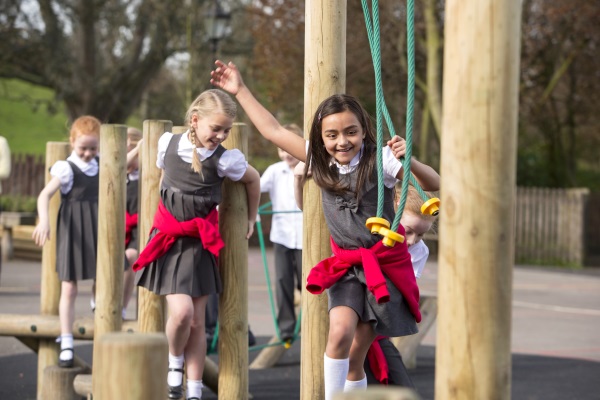John Dabell looks at the emotional and physical benefits of breaktimes, and how teachers can supervise pupils without interfering.

Most children look forward to playtime – they can’t wait to get outside for a break. It’s their time and they have a fair degree of ownership over it.
It’s a part of the day that’s truly theirs to go free-range.
You'd imagine that playtimes are popular. And they are for the vast majority of pupils, but they aren't for everyone.
I teach plenty of children who don’t really enjoy having a break from class time because they “don’t know what to do”, and so they shuffle uncomfortably round the playground or lean against a wall for 20 minutes.
Others find breaktimes too chaotic, too noisy and some dread being picked on, ostracised and excluded. They can’t wait to get back inside.
For some pupils with SEND, break times are a time of social difficulty and vulnerability. For these children, breaks need careful planning and organising so that children don’t dread them, but use them as a time to develop and grow.
Lots of teachers also hate being 'on duty' because they find them stressful.
Supervising hundreds of children is an experience. You go from being Poirot, a nurse and a counsellor to a Butlins redcoat, a referee and the Pied Piper of Hamelin.
You need special playground eyes too as everything can look a blur when you look into a sea of children pinballing from one place to another. It’s a tough gig, especially if you have a lesson observation straight after you’ve got everyone back in.
It can leave you in bits.
Some say that breaktimes are a nightmare because they eat time and hijack teaching and learning, gobbling up more minutes than its allocated slot. They take up a fifth of the school day and probably more.
By the time children have lined up and breaktime incidents have been dealt with, the next lesson has already been curtailed and short-changed.
Breaks can be a breaking point for some schools and shortening the time spent outside has been the way to go. Little wonder that more schools are shortening the day by cutting break and lunchtimes.
However, recreational breaktimes are important.
Breaktimes:
Two surveys conducted by Professor Peter Blatchford and Dr Ed Baines found that breaktimes are a key feature of school life and can impact positively and negatively on social and learning outcomes. They found that breaktime has been eroded in lots of schools despite the obvious benefits it provides.
Scheduling a mid-morning break, a lunchtime break and an afternoon break isn't what some schools do – some take frequent pit stops. They know that children are less attentive during long work periods.
In Finland, children normally get to take a 15 minute break for every 45 minutes of teaching. This break from the class normally means heading straight outside.
Long teaching and learning sessions aren't actually good for anyone because we all need to give our brains rest time – it gives us fresh perspectives and new focus.
This is what Anthony Pellegrini found in his book Recess: Its Role in Education and Development. His research showed that pupils were always more attentive after a break than before.
Adults need to back off too. Children need supervising but they also need the freedom to play rather than walk in the shadows of those on duty – they need to develop social skills with their friends. Sometimes adults supervising can join in the games and 'play' but by doing so they alter the social dynamics.
As you head back to school, think about what role breaktimes play and how they influence what happens in class.
School policy should be based on the best theory and empirical evidence available and everything is telling us that we need more breaks, not less. As Pellegrini and Bohn (2005) note, more frequent break periods could positively affect children’s cognitive performance and social competence.
We can't have an adult-free break because children need teachers to turn to and teachers have responsibilities. It's their duty to:
However, sometimes teachers are too visible and this alters children's behaviour.
Children need opportunities to play away from adults because it helps them create their own ideas, problem-solve and develop new skills. An adult can be like having a huge spanner in the works.
A lack of outside play opportunities is a major factor in the rise of mental health problems in young people
Children need time and space to exercise and play happily and securely with their friends but they don't need adults spoiling their fun.
Breaks are for children and so we should leave them alone to play.
Teachers need to be playground professionals, not holiday reps. This means doing your duty from the perimeter, being unobtrusive and not interfering unless there is a need to.
Effective schools place a precedence on promoting pupil wellbeing – they know exactly how breaktimes feed into mental health, and so see them as a crucial and necessary part of their development.
One thing is certain: we all need a break from time to time so we can refresh and reboot.